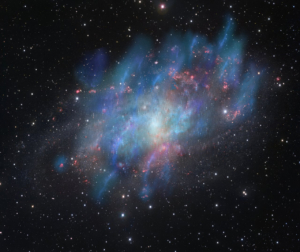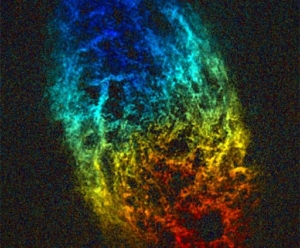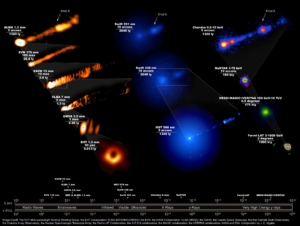VLA observations revealed that cosmic rays can play an important role in driving winds that rob galaxies of the gas needed to form new stars. This mechanism may be an important factor in galactic evolution, particularly at earlier times in the history of the universe.


Put a Ring On It: How Gravity Gives Astronomers a Powerful Lens On the Universe
Gravity can change the path of light, and sometimes focuses the light of distant galaxies to create a gravitational lens or Einstein Ring. It is a common sight in modern deep field images, but the effect was first seen by the Very Large Array in 1987.

VLA Reveals Double-Helix Structure in Massive Galaxy’s Jet
Astronomers used the VLA to trace a corkscrew-shaped magnetic field in a powerful jet of material ejected from the core of a massive galaxy farther away from the central galaxy’s central black hole than ever seen before. The new images provide clues that will help understand the mechanics of such jets, which are seen throughout the Universe.

Invisible Colors: Why Astronomers Use Different Radio Bands
Radio light is invisible to our eyes, so it’s easy to think of all radio light as the same. But radio is filled with colors, just as the colors of visible light we can see, and radio astronomy is at its most powerful when we use all the colors of its rainbow.

New Study Reveals Previously Unseen Star Formation in Milky Way
A new survey of our home galaxy, the Milky Way, combines the capabilities of the Very Large Array and the Effelsberg telescope in Germany to provide astronomers with valuable new insights into how stars much more massive than the Sun are formed.

VIDEO: Multi-wavelength Observations Reveal Impact of Black Hole on M87 Galaxy
New multi-wavelength observations mounted by the Event Horizon Telescope (EHT) collaboration across the entire electromagnetic spectrum have provided new insight into the impact of the black hole at the core of galaxy M87 on its immediate, and not so immediate, surroundings.





